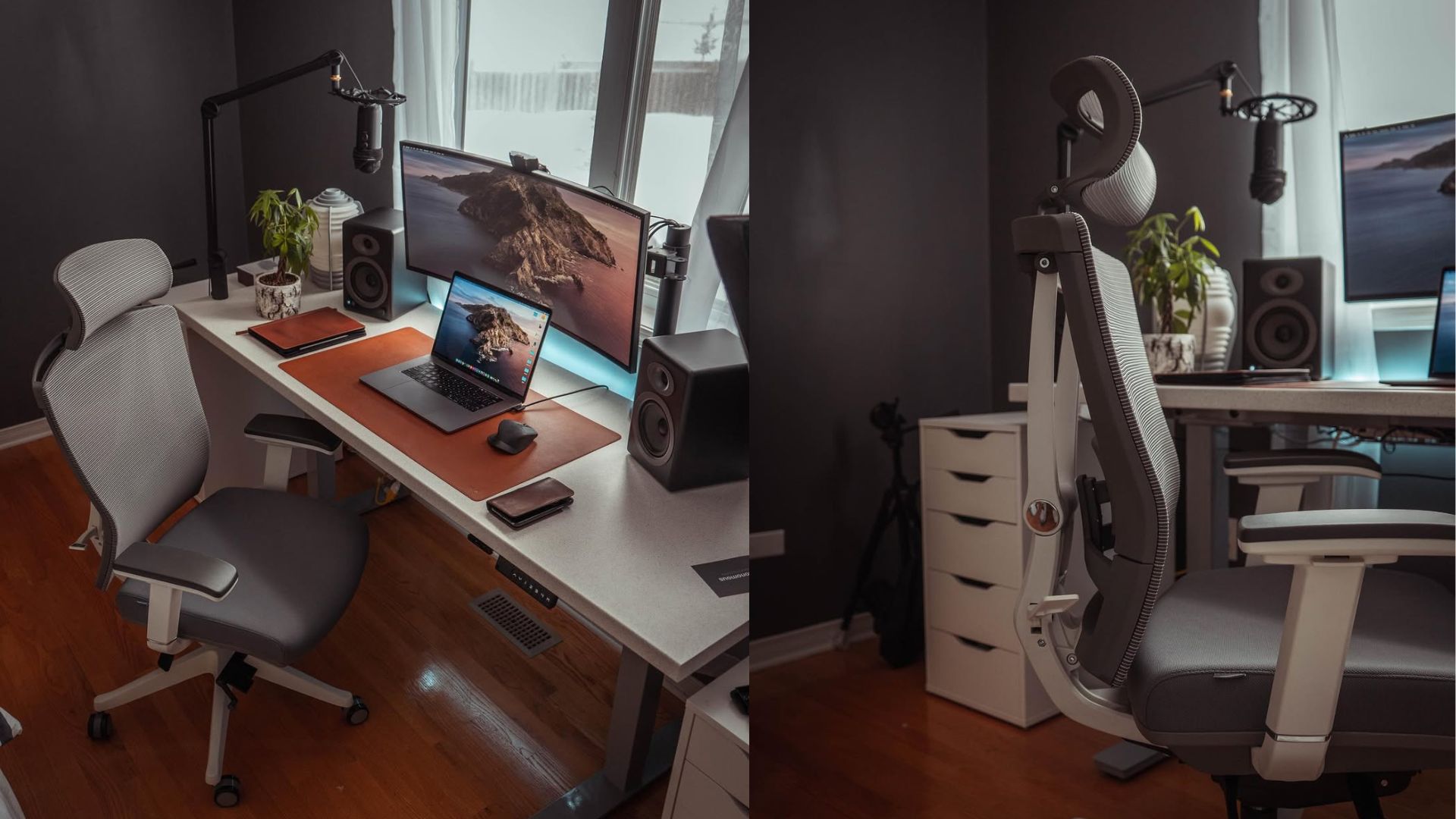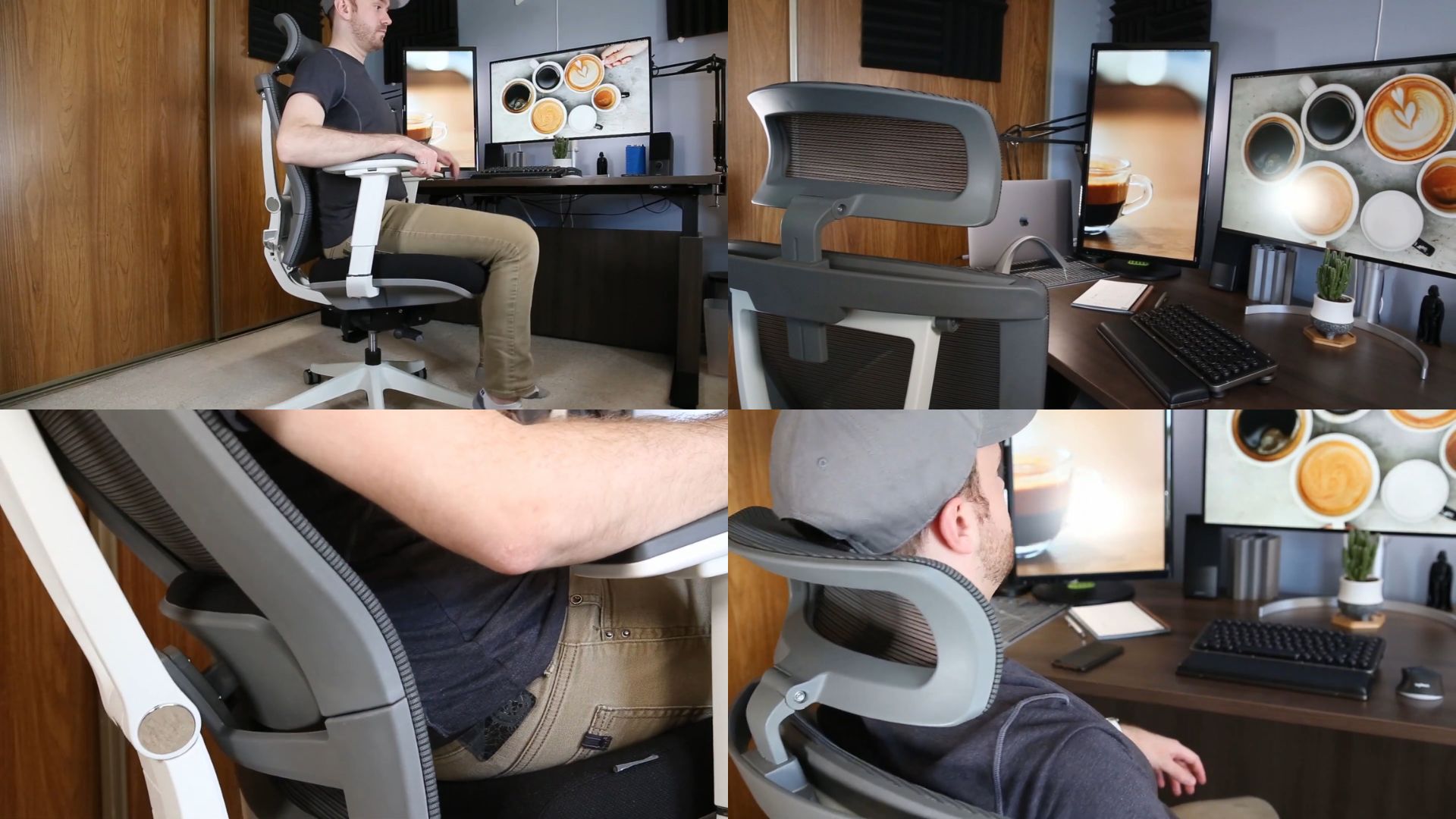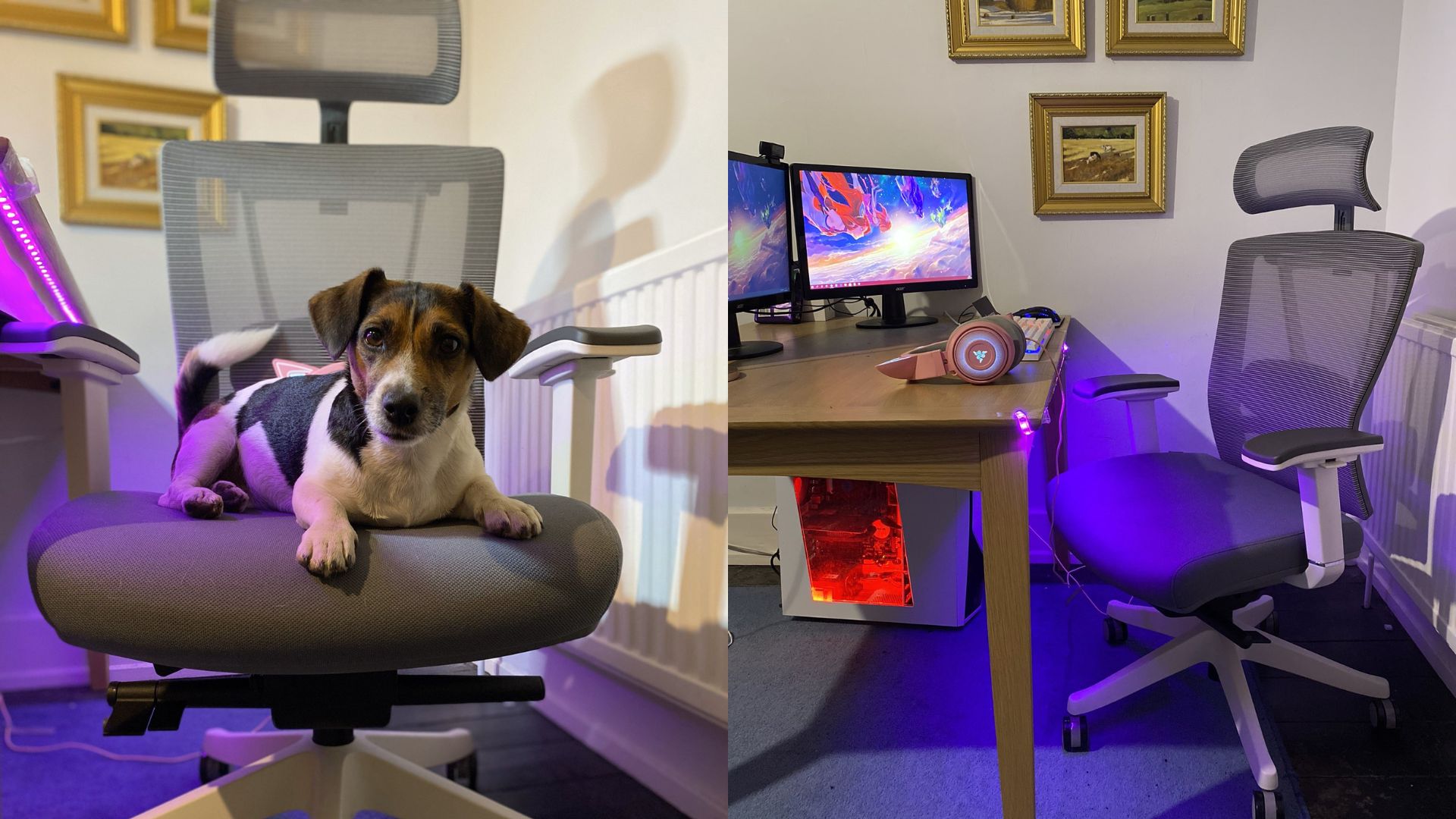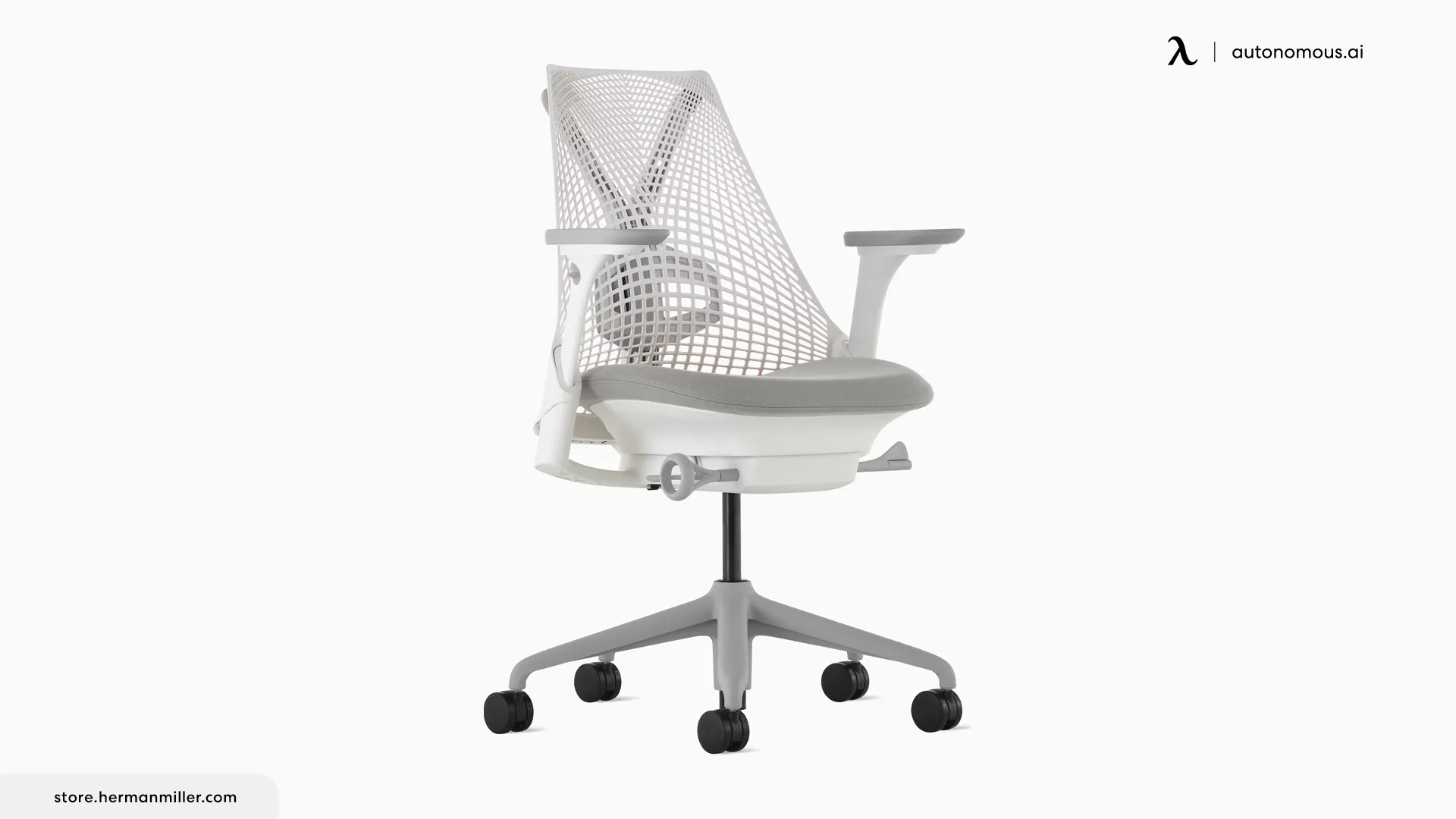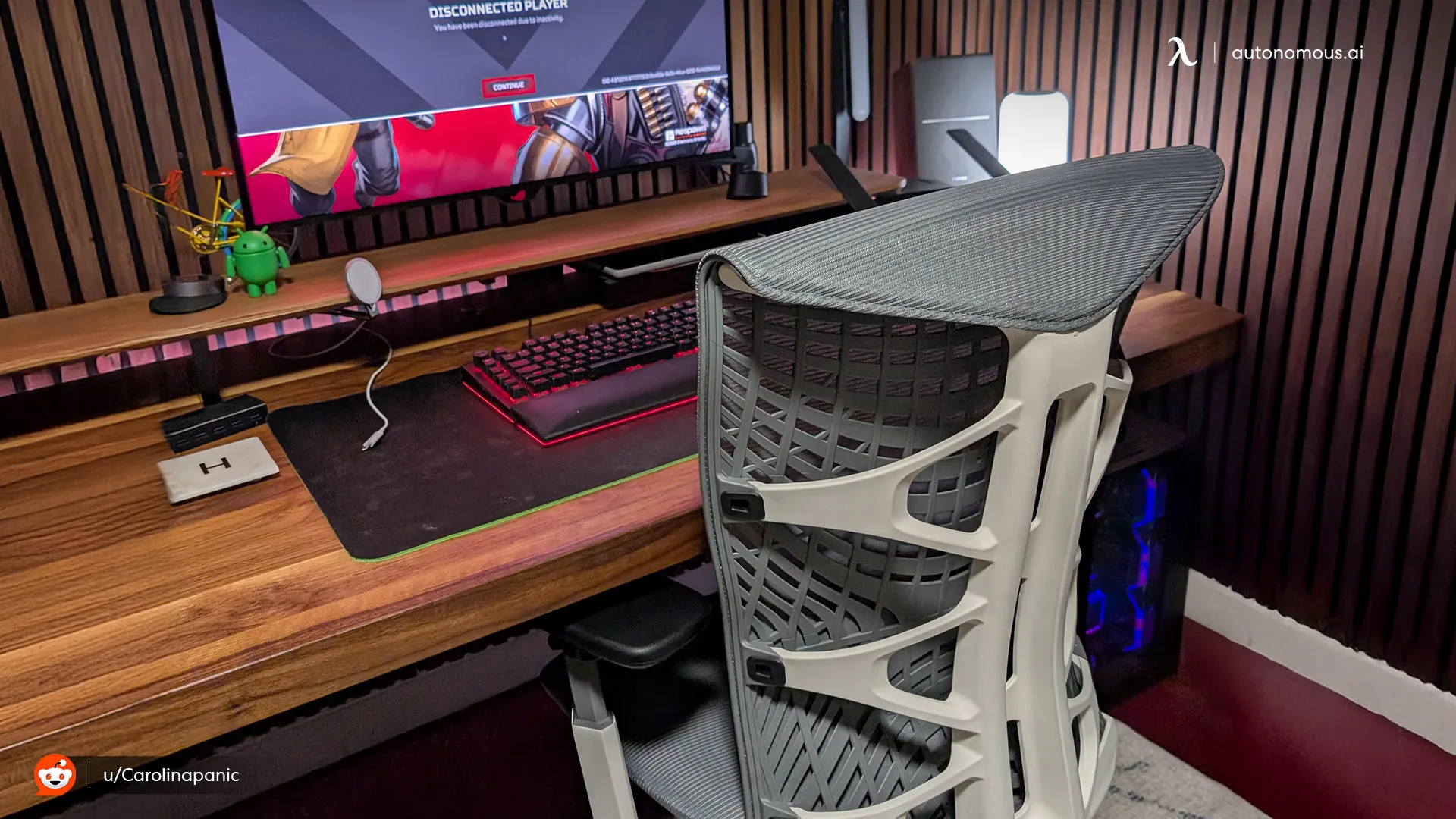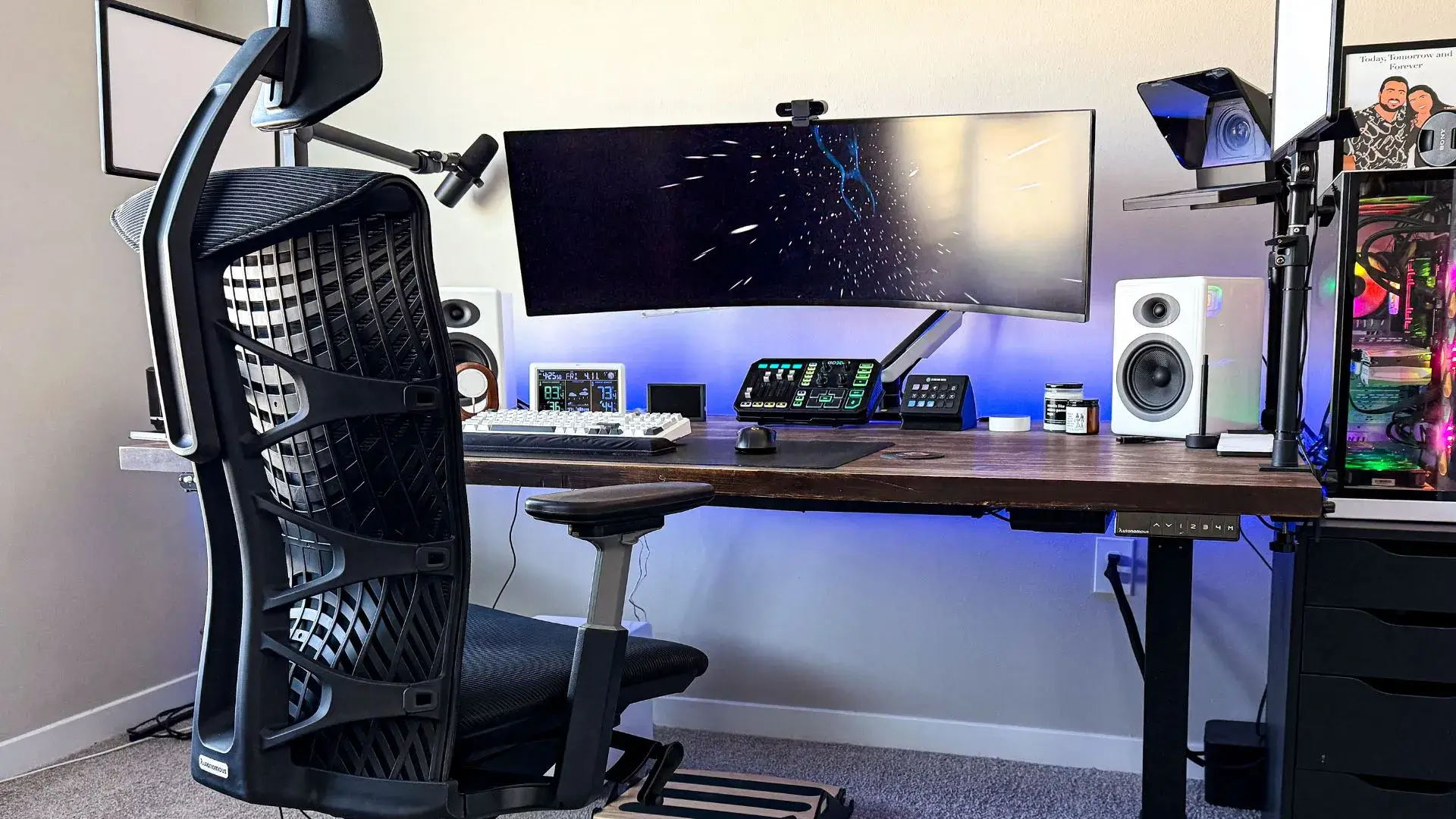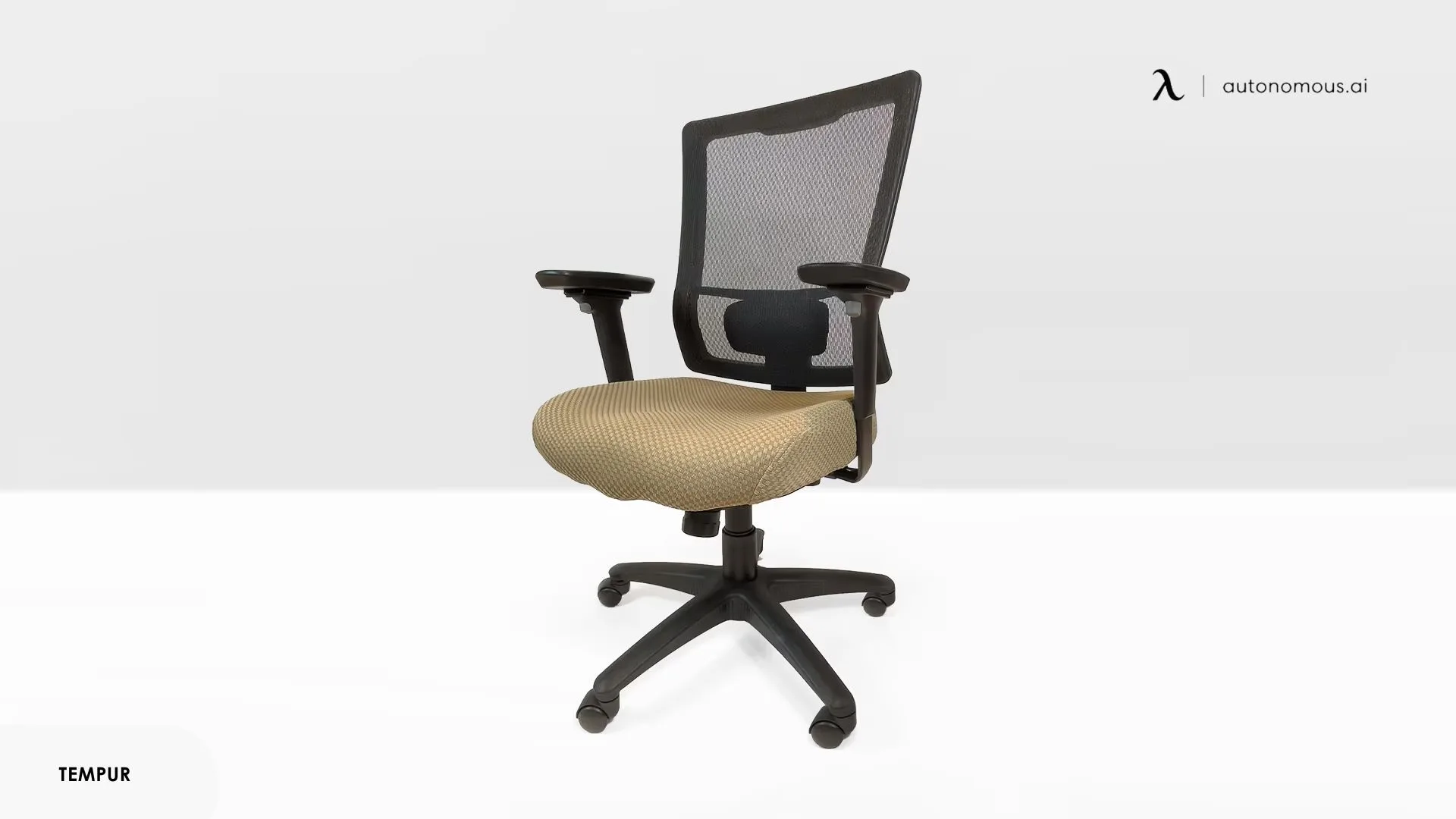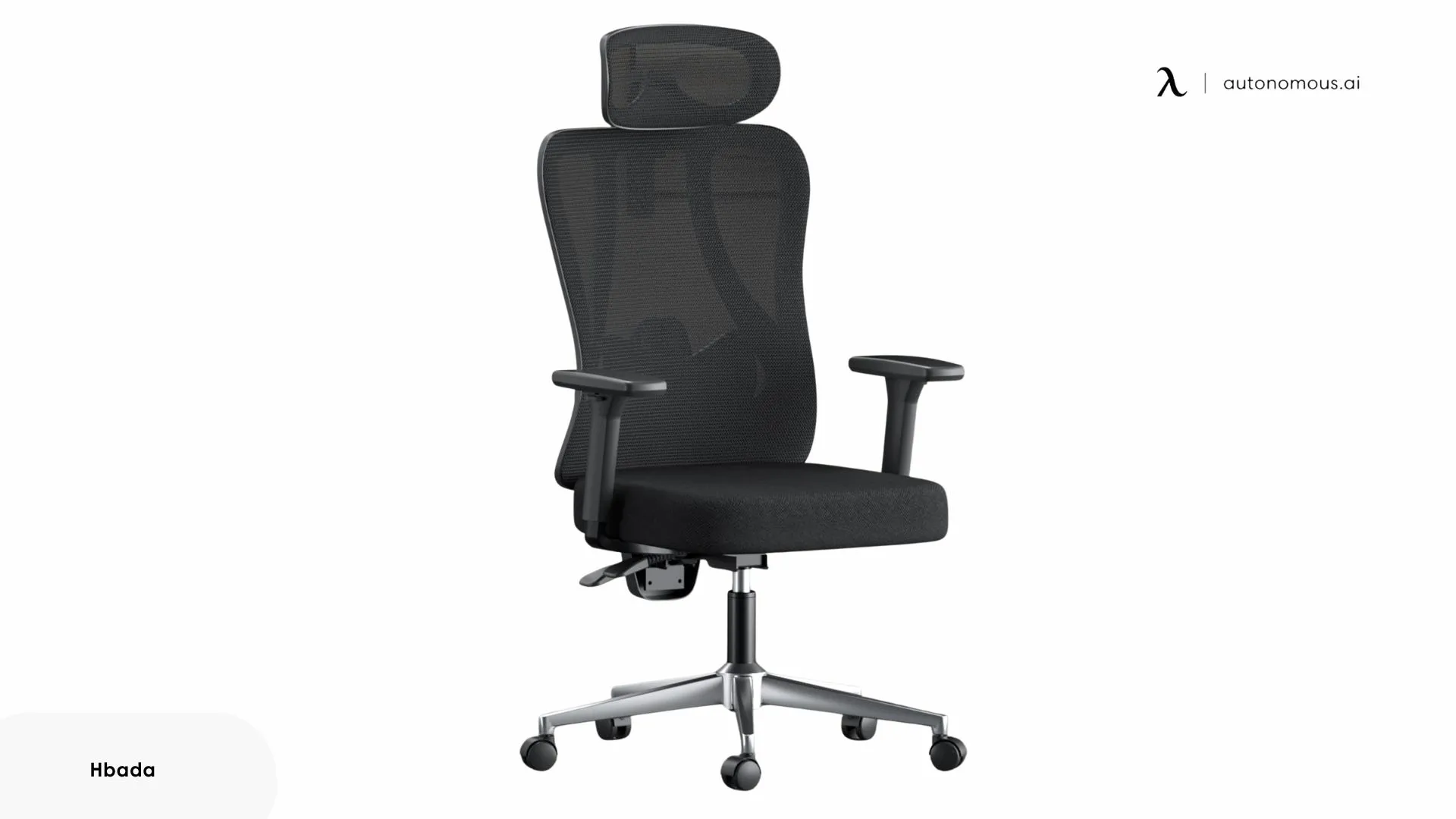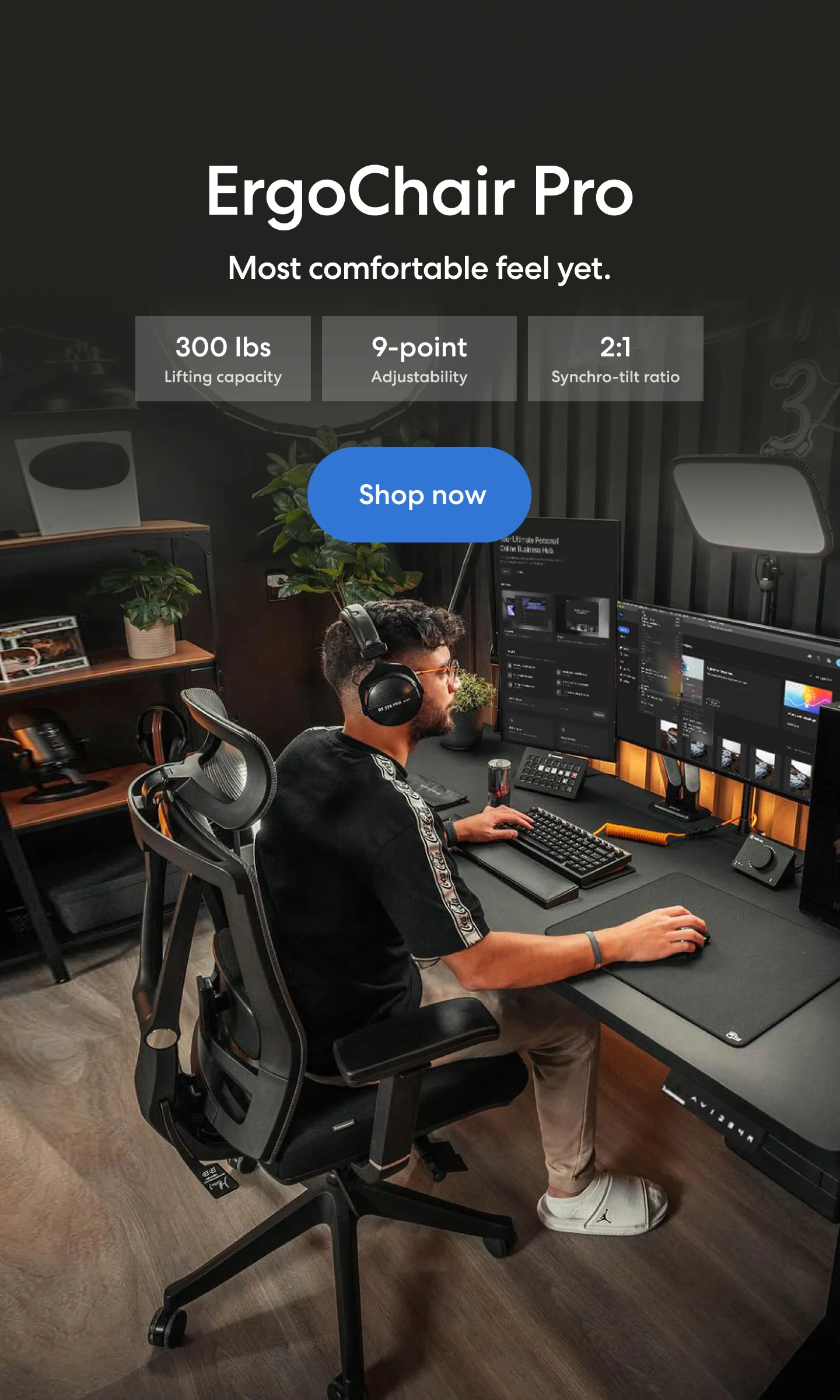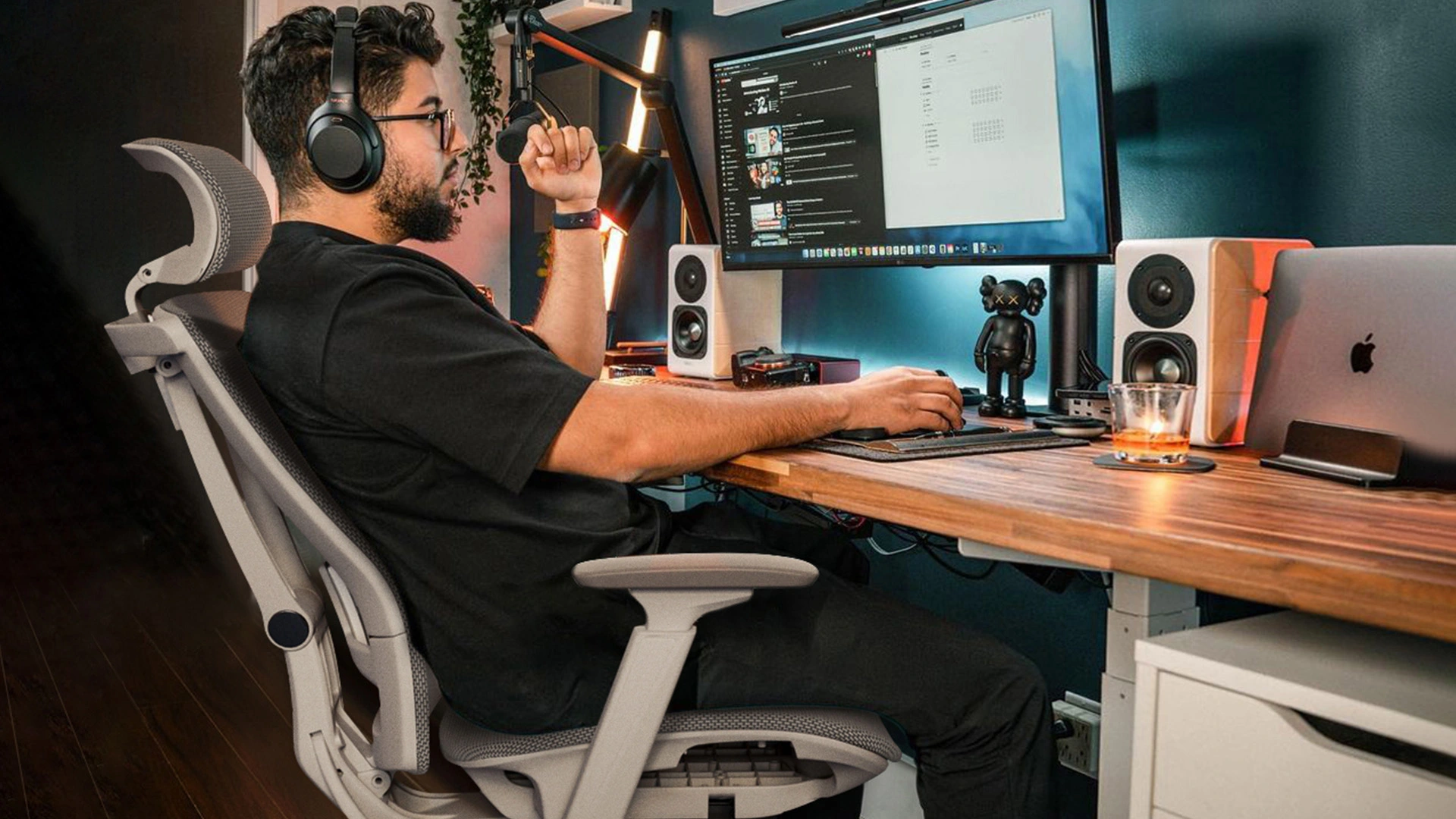
Table of Contents
Sciatica pain can turn a normal workday into a challenge. Hours of sitting at a desk place extra pressure on the lower back, which often worsens nerve irritation and discomfort. The best office chair for sciatica pain isn’t just about comfort — it’s about support that promotes healthy posture and relieves strain on the spine.
Today’s ergonomic office chairs are designed with adjustable lumbar support, cushioning, and movement features to help reduce pressure points so you can work with less pain and more focus.
How Sitting At A Desk Can Contribute To Sciatica Pain
Prolonged sitting in a desk chair can place significant stress on the lower spine. When the lumbar region lacks proper support, the vertebrae compress, which can irritate the sciatic nerve and trigger pain that radiates through the hips and legs. A poor seating setup, such as a chair without lumbar support or an incorrect desk height, often makes the situation worse.
Using a desk chair good for sciatica pain means maintaining a neutral spine, keeping feet flat on the floor, and reducing unnecessary pressure on the lower back. Regular breaks to stretch and move also promote circulation, helping to relieve tension before it builds into discomfort. By combining movement with a good office chair for sciatica, you can create a healthier and more sustainable work routine.
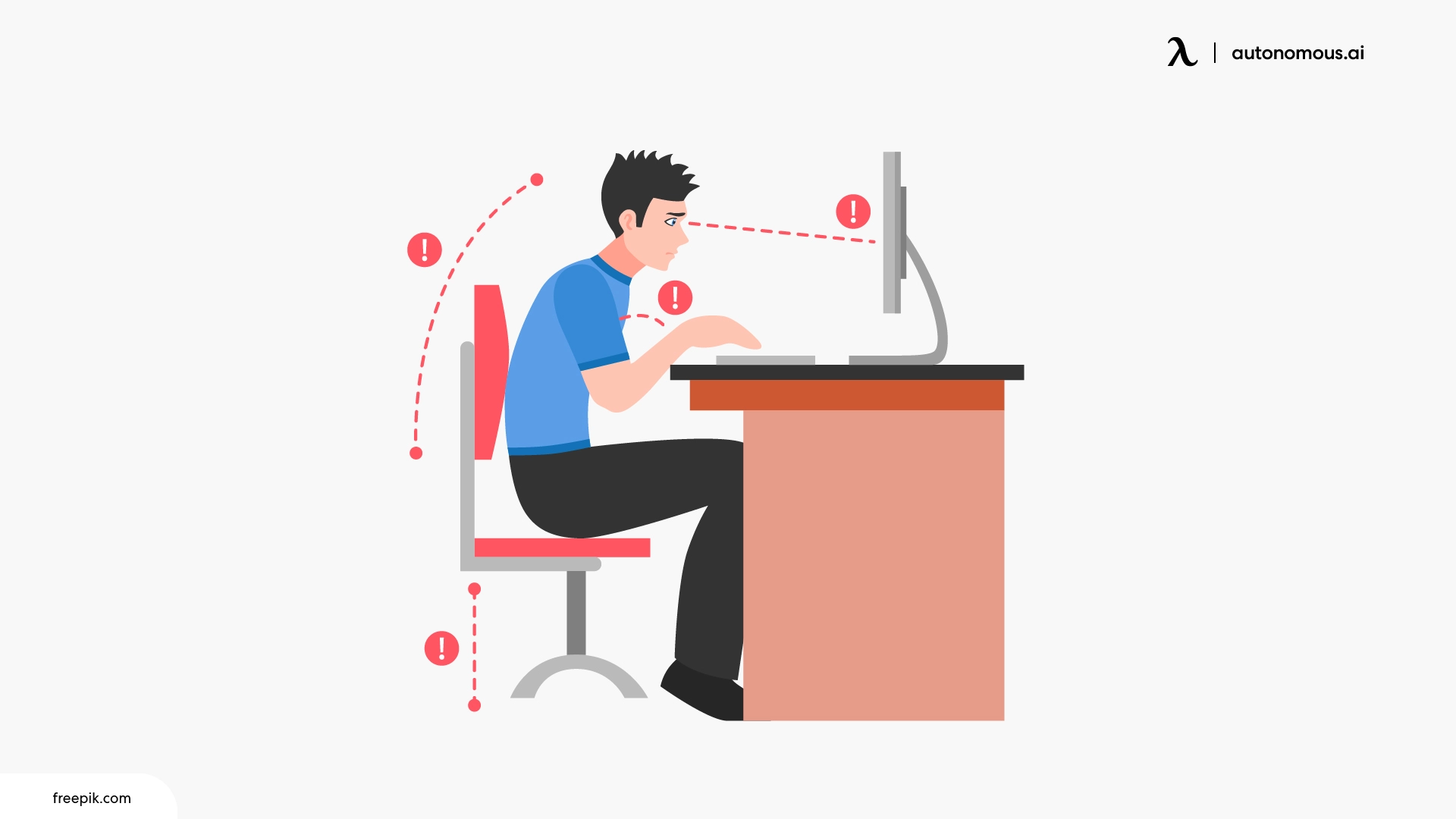
Best Office Chairs For Sciatic Pain
A good office chair for sciatica should provide proper lumbar support, an adjustable seat, and a balanced recline function to help keep the spine aligned while reducing stress on the sciatic nerve. The right chair will promote movement, encourage proper posture, and allow users to customize their seating position to relieve pain.
Below, we explore the best office chairs for sciatic pain, evaluating their design, adjustability, comfort, and how they help with nerve pain relief.
1. Autonomous ErgoChair Pro – Fully Adjustable Sciatica Relief Chair
For people dealing with sciatic nerve discomfort, adjustability is everything — and the Autonomous ErgoChair Pro delivers on that front. This ergonomic office chair for sciatica is built to adapt to different body shapes and sitting habits, offering a personalized setup that keeps pressure off the lower spine.
Its lumbar support can be moved to fit the lower back precisely, reducing the pressure that usually aggravates the sciatic nerve. The seat depth adjustment ensures proper leg positioning, preventing tension from building in the thighs and hips.
A breathable mesh back prevents overheating, while 4D armrests help you keep your shoulders and arms in a relaxed, balanced position. Altogether, it’s an ergonomic chair for back pain that supports movement, posture, and comfort throughout the workday.
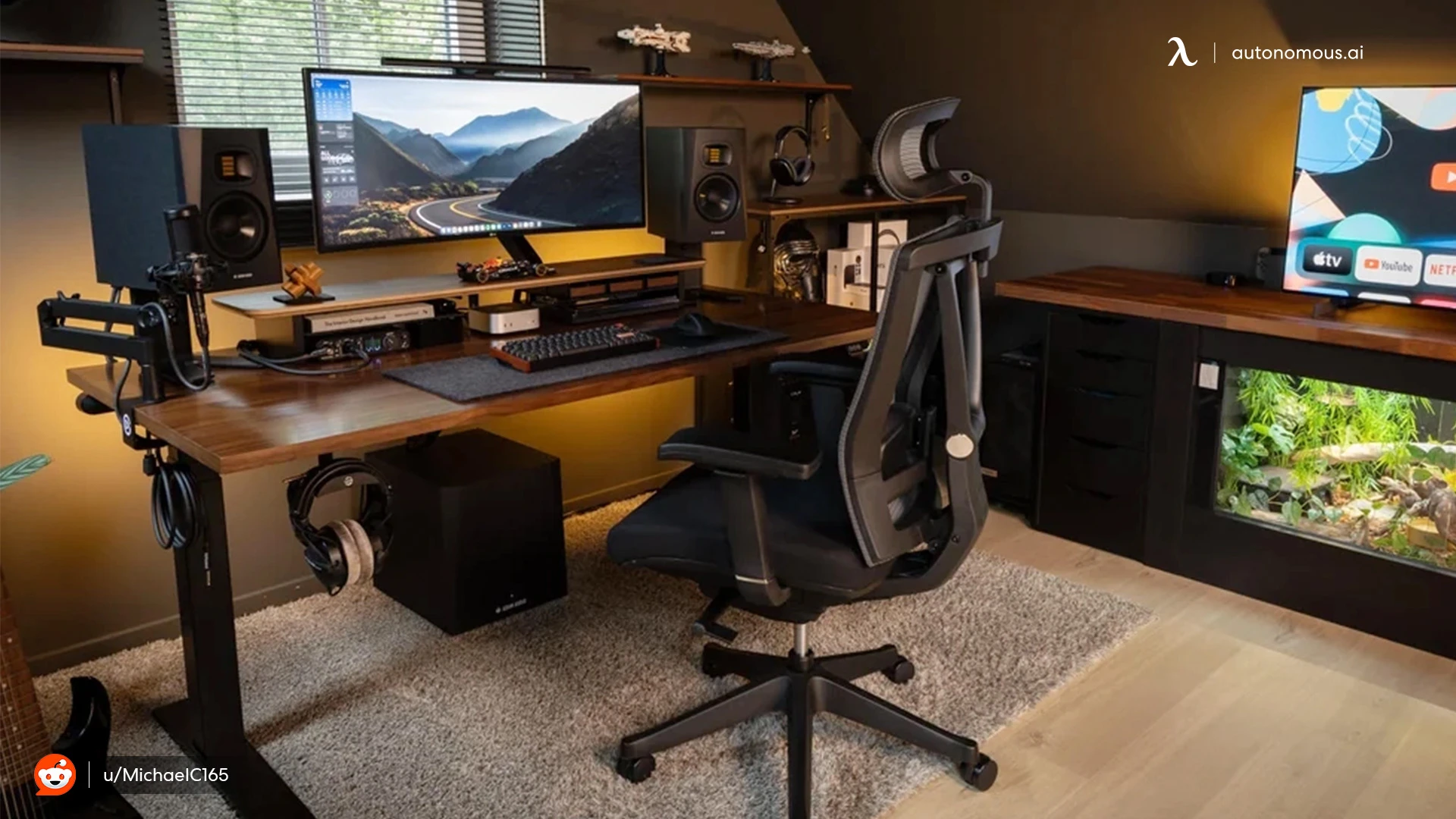
Autonomous ErgoChair Pro
| Dimensions | 29”L x 29”W x 46” - 50”H |
|---|---|
| Seat dimensions | 20”L x 20”W |
| Seat height | 18” - 20” |
| Back dimensions (w/o headrest) | 21”W x 22”H |
| Back dimensions (with headrest) | 21”W x 28” - 31”H |
| Tilt range | 22° |
| Armrest height | 11” - 14” |
| Armrest height (from the floor) | 26.7” - 32.2” |
| Caster wheel diameter | 2.36 inches |
| Number of caster wheels | 5 pieces |
| Materials | Polyester fabric with molded foam interior and durable nylon plastic frame; PU handrest pads. |
| Colors | Cool Gray, Evergreen, All Black Red Apple, Black & White, Baby Blue |
| Weight capacity | 300 lbs |
| Item weight | 48.5 lbs |
| Shipping dimensions | 29”L x 27”W x 19”H x 67 lbs |
| Assembly required | Yes |
| Warranty | 2 years |
| Free returns | 30 days The trial and return policy does NOT apply to products on sale. |
| Adjustability | Headrest, armrest, back tilt angle and tension, seat tilt and height. |
2. Herman Miller Sayl Chair – Innovative Support with Style
The Sayl Chair takes a different approach to back support, using its unframed elastomer back to flex with your movements. For someone managing sciatica pain, this flexibility helps reduce pressure on the lower spine while still keeping posture aligned.
The design encourages natural micro-movements, which can prevent stiffness and nerve irritation during long hours at a desk. Its Harmonic Tilt system lets you recline smoothly without straining the lower back, while the breathable backrest improves airflow for added comfort.
If you’re looking for a good office chair for sciatica that combines aesthetics with functional support, the Sayl Chair blends both in a way few competitors manage.
3. Autonomous ErgoChair Ultra 2 – High-End Comfort
When sciatica pain is a daily challenge, small adjustments can make the difference between lasting discomfort and steady relief. The Autonomous ErgoChair Ultra 2 is designed with this in mind, offering an adaptive lumbar system that automatically molds to the curve of your lower spine. This dynamic support helps reduce nerve pressure without constant manual adjustments.
The chair’s multiple reclining angles let you alternate between upright focus and a more relaxed posture, easing tension across the hips and lower back. Its adjustable seat depth ensures your legs rest comfortably, preventing circulation issues that often worsen sciatic pain.
Finished with premium office chair materials that balance durability and comfort, the Autonomous ErgoChair Ultra 2 is more than just an ergonomic office chair for sciatica — it’s a premium solution for anyone who spends long hours seated and needs reliable relief.
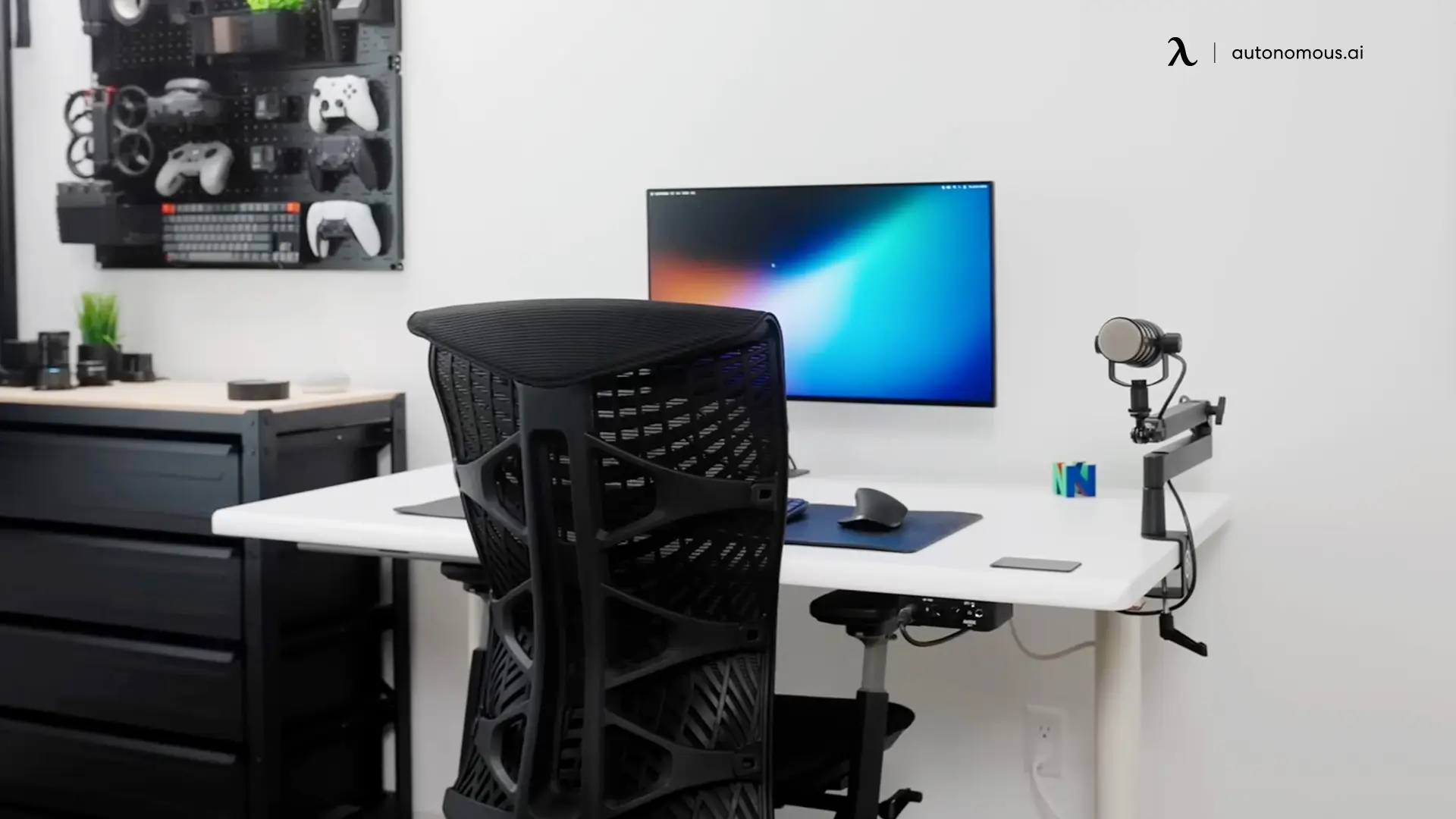
ErgoChair Ultra 2
| Dimensions (w/o headrest) | 28”L x 28”W x 41” - 46”H |
|---|---|
| Dimensions (with headrest) | 28”L x 28”W x 49” - 58”H |
| Seat dimensions | 18”L x 18”W |
| Seat depth range | 18” - 20.5” |
| Seat height | 18” - 23” |
| Headrest | 8" - 12" |
| Back dimensions | 20”W x 23”H |
| Tilt range | 25° |
| Armrest height | 7” - 11” |
| Armrest height (from the floor) | 23.5” - 27.7” |
| Caster wheel diameter | 2.56 inches |
| Number of caster wheels | 5 pieces |
| Materials | 100% TPE and polyester fabric upholstery with ABS plastic frame, aluminium base |
| Colors | Onyx Black, Dover Gray |
| Weight capacity | 320 lbs |
| Item weight | 36.5 lbs |
| Shipping dimensions | 28”L x 17”W x 31”H x 45 lbs |
| Assembly required | Yes |
| Warranty | 2 years |
| Free returns | 30 days |
| Adjustability | Headrest, armrest, back tilt angle and tension, seat height. |
4. TEMPUR Chair – Space-Grade Comfort for Sciatica Relief
Known for its space-grade cushioning, the TEMPUR-Lumbar Support™ Office Chair brings the same technology used in mattresses and pillows into the workplace.
For people with sciatica pain, the benefit is clear: the TEMPUR® lumbar cushion adapts to the exact shape of your lower back, distributing weight evenly and easing pressure points that can trigger nerve pain.
This ergonomic office chair for sciatica also includes a tilt tension system and height adjustment, allowing you to shift positions easily without straining your spine.
If you want a desk chair good for sciatica pain that emphasizes softness and contouring rather than firm structure, this model provides a tailored feel that can help you stay comfortable through long sitting sessions.
5. Hbada P3 – Affordable Sciatica Relief Solution
The P3 Ergonomic Office Chair is a budget-friendly option that still offers many features useful for easing sciatica discomfort. Its 2D adjustable lumbar support encourages the spine to maintain a healthy “S” shape, reducing the stress that often builds up in the lower back during long sitting hours.
A reclining backrest that extends up to 145° allows you to shift positions or lean back for relief, while the adjustable headrest helps align the neck and shoulders to prevent added strain. This detail makes it comparable to good office chairs for neck pain, which are designed to reduce upper body tension during long work sessions.
For anyone seeking a good office chair for sciatica without a high price tag, the Hbada P3 delivers practical ergonomic adjustments and reliable comfort.
How To Sit With Sciatica
Sciatica often feels worse when you stay locked in the same position for too long. While the best office chair for sciatica pain can ease pressure on the lower back, daily habits play an equally important role in managing discomfort.
Here are strategies to make sitting healthier and more supportive:
- Sit Deep Into the Backrest:
Position yourself so your lower spine rests against the lumbar support. This keeps the pelvis aligned and prevents slouching, which is a common trigger for nerve irritation. For individuals who prefer sitting cross-legged, it's beneficial to select a chair specifically designed to accommodate that posture. The office chair for sitting cross-legged can enhance support and comfort during your workday, promoting better posture and overall well-being.
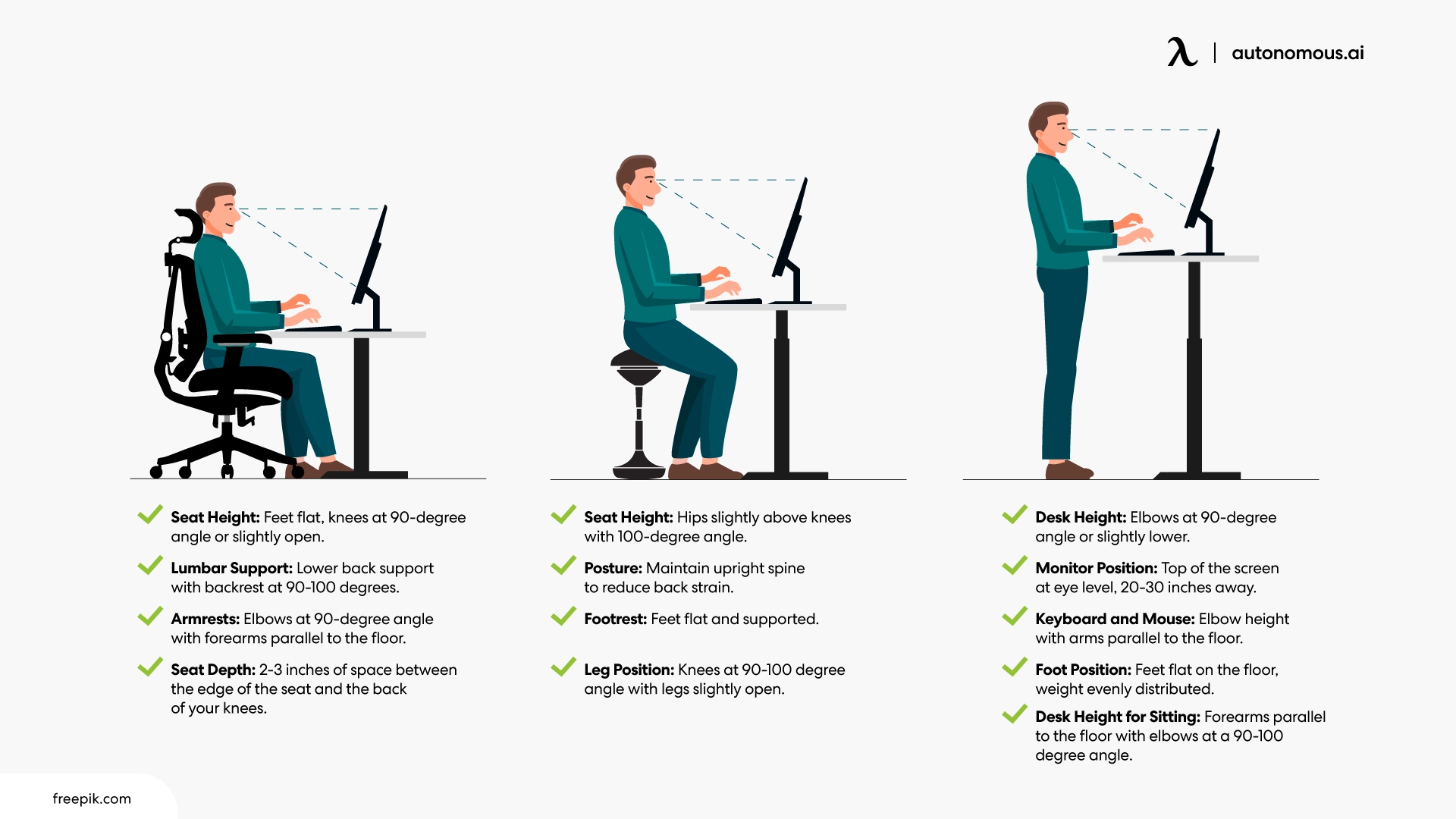
- Fine-Tune Seat Height and Depth:
Adjust your chair so your thighs remain parallel to the floor, with your feet resting flat or on an office footrest. A two-to-three-inch gap between the seat edge and your knees improves circulation and prevents compression behind the legs.
For additional support, some people find that an office chair with a leg rest helps ease tension by keeping the legs slightly elevated, reducing strain on the lower back, and improving blood flow.
- Recline to Relieve Pressure:
A slight recline — usually between 100° and 110° — helps open up the hip angle and reduce strain on the lumbar discs. This position is especially effective for easing tension when sitting for extended periods. A good reclining office chair allows you to maintain this position comfortably, offering relief from sciatica pain during long sitting sessions.
- Balance the Upper Body:
Set armrests at a height where your elbows bend naturally at 90 degrees, keeping your shoulders relaxed. If your chair includes a headrest, adjust it to support the base of your skull, preventing neck muscles from overcompensating.
- Switch Positions Regularly:
Staying still can stiffen the muscles around the sciatic nerve. Shift between upright sitting, reclined sitting, and leaning slightly forward to encourage movement throughout the spine.
Another helpful approach is active sitting, which involves using chairs or stools that allow gentle motion while seated. These subtle shifts keep core muscles engaged, improve circulation, and prevent the static pressure that often worsens sciatica pain.
- Integrate Standing Periods:
An adjustable standing desk makes it easier to alternate between sitting and standing. Even standing for 10–15 minutes each hour can reduce spinal compression and promote circulation in the legs.
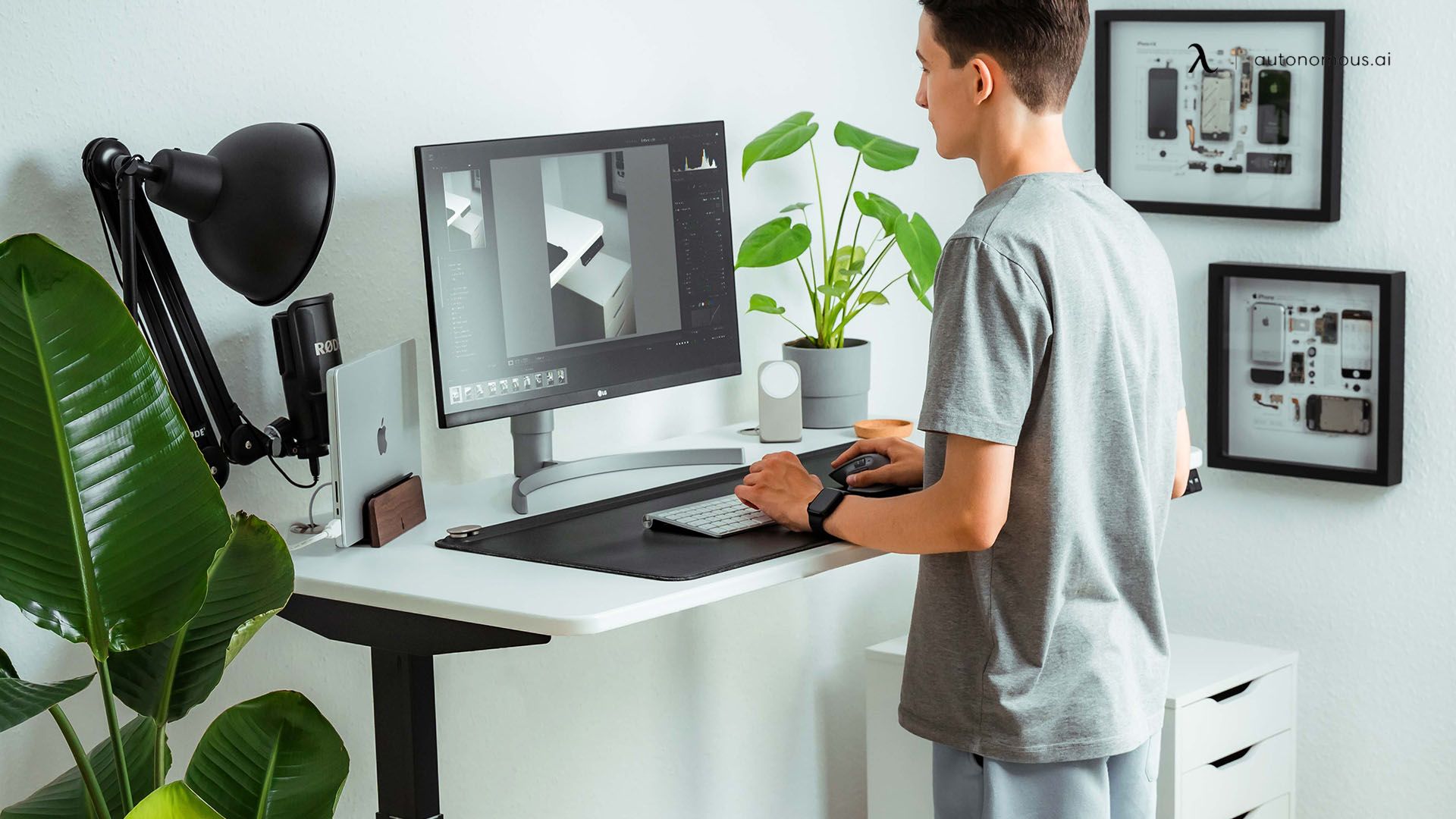
- Explore Alternative Seating:
Active sitting chairs like balance stools, kneeling chairs, or stability balls introduce small, controlled movements. These office chair alternatives to traditional office chairs engage the core muscles, helping to strengthen them and alleviate pressure on the lower back.
By reducing the static load often associated with prolonged sitting, they can contribute to improved posture and overall comfort during work hours.
- Include Stretch Breaks:
Integrating small movements throughout your day can enhance circulation and minimize stiffness, particularly if you find ways to stay active at your desk.
Short breaks every half hour to stretch hamstrings, hip flexors, and glutes can relieve tension in the areas most likely to irritate the sciatic nerve. Walking a few steps or performing gentle seated stretching exercises also helps keep discomfort under control.
By combining ergonomic adjustments with movement and alternative seating methods, you can transform your daily routine into one that supports both comfort and long-term spinal health.
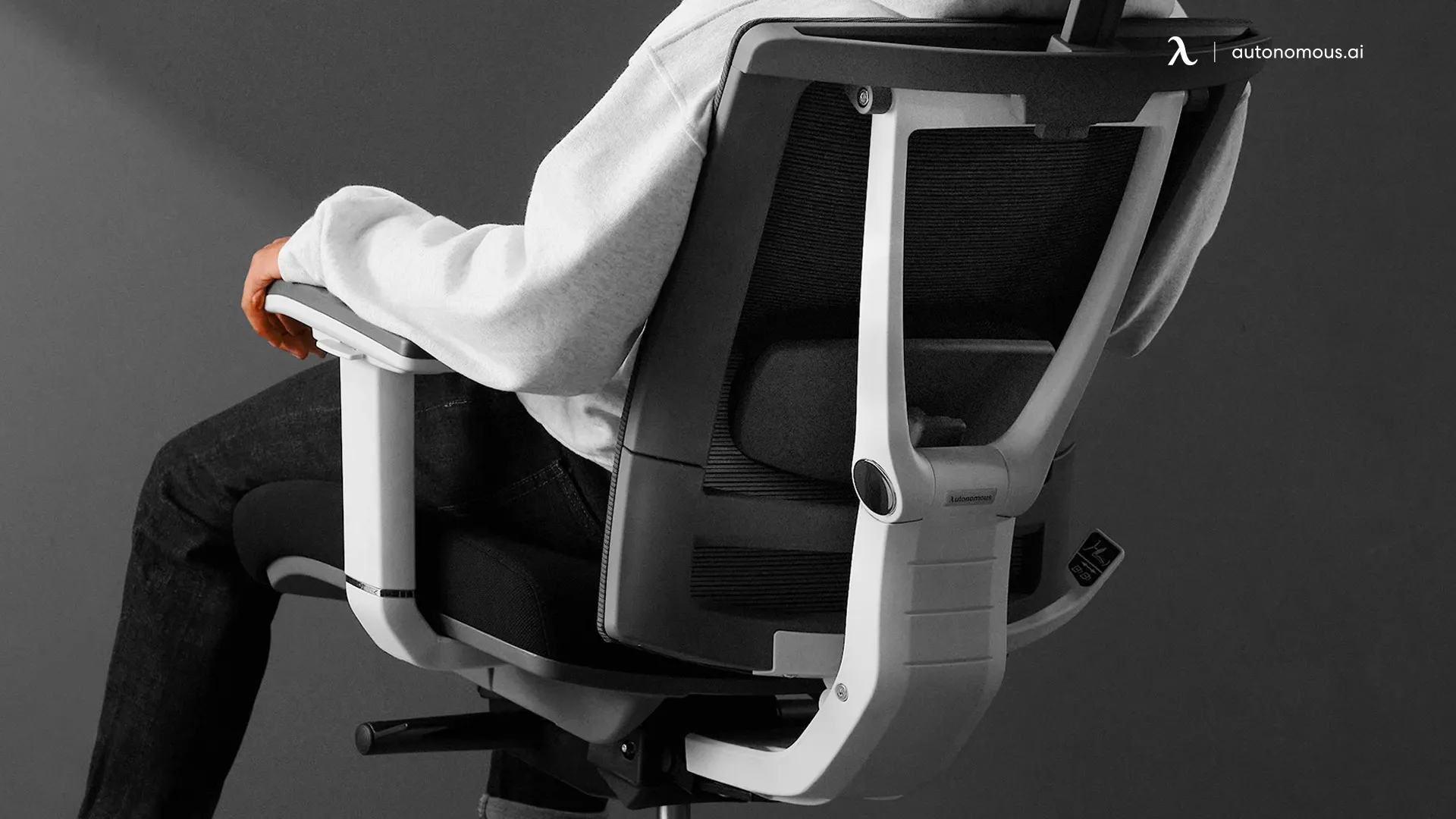
FAQs
1. Can an ergonomic office chair ease sciatica?
Yes. An ergonomic office chair for sciatica is designed to relieve pressure on the lower back and promote proper spinal alignment. Features like adjustable lumbar support, seat depth control, and a reclining backrest help reduce nerve compression, improving comfort and alleviating sciatica pain.
2. What chairs are designed for sciatica?
Chairs designed for sciatica typically include adjustable lumbar support, ergonomic cushioning, and reclining functions to relieve lower back pressure and improve posture.
3. What chairs do chiropractors recommend for office chairs?
Chiropractors often recommend office chairs with adjustable lumbar support, proper seat depth, and ergonomic features to support the spine. A chair with a reclining backrest and a headrest can also help maintain neutral spine alignment.
4. Is a hard chair good for sciatica?
A hard chair isn’t inherently better for sciatica than a soft chair. Sciatica pain is caused by nerve compression, often from a herniated disc or spinal misalignment. Regardless of seat firmness, the key to managing sciatica is maintaining good posture and supporting the lower back. Both hard and soft chairs should support proper alignment to reduce strain on the sciatic nerve.
5. How to work at a desk with sciatica?
When working with sciatica, it’s crucial to maintain good posture. Use a chair with adjustable lumbar support, sit with your feet flat on the floor, and take regular breaks to stretch and walk. Consider using a standing desk to reduce pressure on your back.
6. Is sitting cross-legged bad for sciatica?
Sitting cross-legged for long periods can aggravate sciatica by misaligning the spine and increasing pressure on the sciatic nerve. Maintaining proper posture is essential, and some individuals find relief by sitting with a more natural hip angle. A reclining ergonomic chair can help adjust your posture, and an ergonomic chair with a leg rest may offer additional support for circulation and spinal alignment.
7. Are saddle seats good for sciatica?
Saddle seats can be beneficial for sciatica as they promote an open hip angle and a more natural spine position, reducing lumbar pressure. These seats help alleviate lower back discomfort by improving posture. Pairing a saddle seat with supportive cushions or an orthopedically-certified seat pillow can enhance comfort and minimize sciatica-related pain.
8. How can I rest or exercise with sciatica?
Exercise is essential for managing sciatica pain. Gentle activities like walking, stretching, and mobility exercises help improve circulation and relieve tension along the sciatic nerve. High-impact activities, such as running or bending forward with straight legs, may worsen the condition.
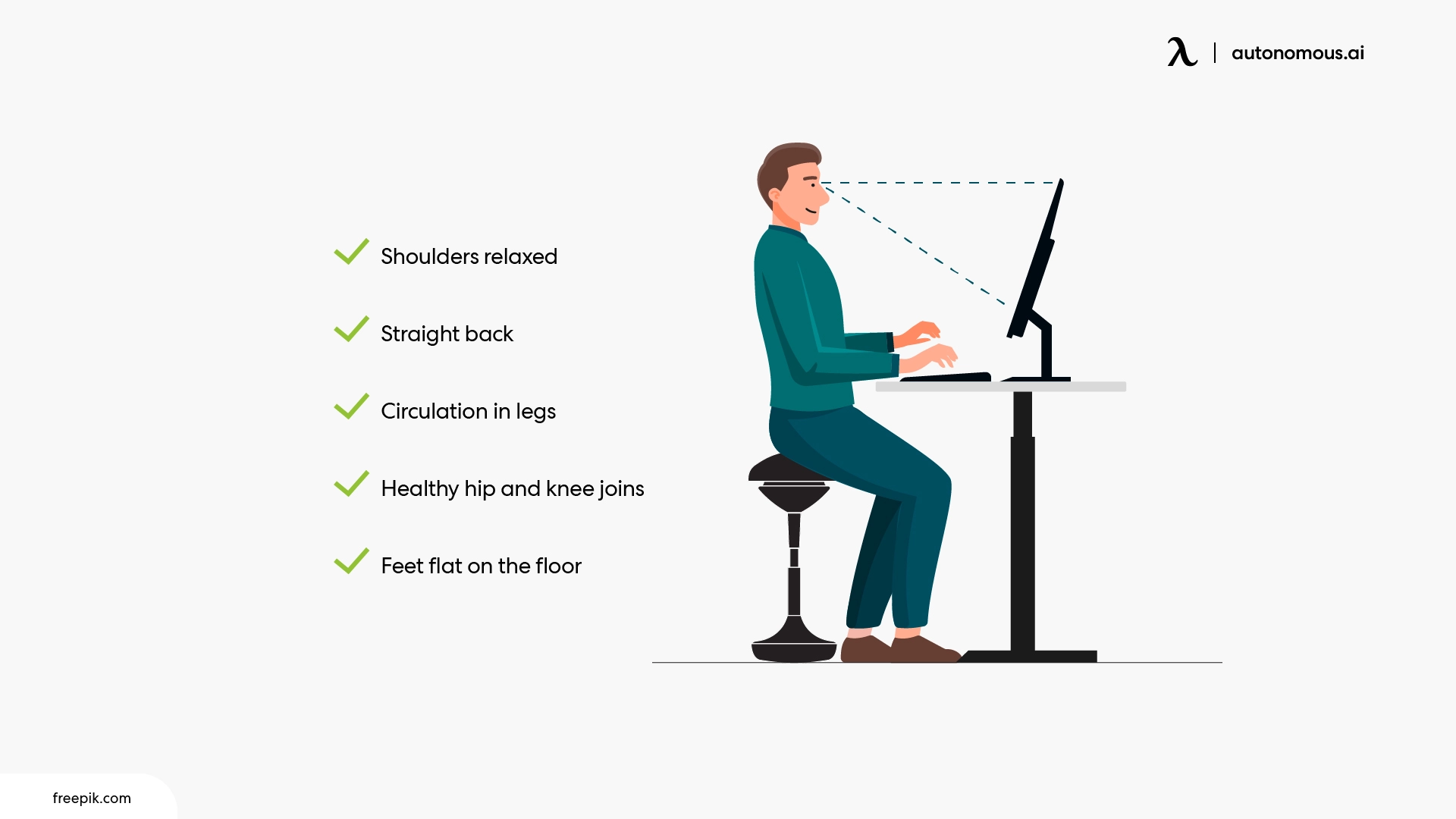
Conclusion
The chairs mentioned above are all solid options when looking for the best office chair for sciatica nerve pain. But remember, finding relief isn’t just about choosing the best office chair for sciatica nerve pain. Making small changes to your daily routine can play a big role in easing your discomfort.
If you’re still dealing with pain after upgrading your chair and adjusting your habits, it might be time to see a physician for further guidance.
You can take proactive steps to manage your sciatica by choosing a good office chair for sciatica, incorporating simple stretching exercises into your routine, staying active, and following the treatment your doctor recommends.
Spread the word
.svg)


